| Botanical Name |
|
| Family |
Iridaceae - The iris family. |
| Pronunciation |
wat-SON-ee-uh mar-jen-AY-tuh |
| Common Name(s) |
|
| Plant Group |
- Bulb / Corm / Rhizome / Tuber / Epigeal bulb Bulbs: are made up of fleshy scales as in an onion
Corm: a short, swollen, underground stem that is hard and not fleshy as in a gladiolus
Tuber: a solid, fleshy, underground, storage organ as in a potato
Rhizome: an underground, horizontal, swollen stem at the base of the plant as in an iris
Epigeal bulb: bulbs that rest above the ground with only the roots anchoring the plant to the earth as in albuca
|
| Plant Size |
- Very large
| Tree | Over 25m |
| Shrub | Over 4m |
| Perennial/ground cover | Over 1m |
| Bulb | Over 1.2m |
| Succulent | 1.5m to 2m |
|
| Position |
- Sun The area is in full sun for all or most of the day, all year round.
|
| General Information |
- Deciduous Plants which completely lose their foliage for part of the year.
- Drought Tolerance: High The plant is well adapted to arid conditions; it can survive long periods of drought and high temperatures without extra water.
- Frost: Half-hardy The plant is able to survive low temperatures and some frost but requires protection against severe frost.
- Water Wise Plant species originating from low rainfall regions that require less water to survive and thrive than other plant species.
|
| Specific Information |
Watsonia marginata is endemic to areas in the winter-rainfall region of South Africa which have extremely dry summers. The flowers are different from other watsonias in that they are cup-shaped rather than trumpet-shaped, and are held on unusually long spikes. The leaves are attractive and unusual for this family, being broad, bluish-green in colour and with conspicuous yellowish margins.
This watsonia has escaped from gardens in the south-western parts of Australia where is is a declared invasive weed.
|
| Ad Break |
|
| Flowers |
| Description |
up to about 50 densely packed cup-shaped flowers on spikes 1.2 to 2 meters tall
|
| Season |
- Spring to Summer Plants will seldom bloom for the entire season as given in the list, but should flower during a period within these parameters.
|
| Colour |
|
| Growth Rate |
- Fast Specifying growth rate can be very misleading as there is considerable variation of growth rate depending on type and species of plant, available water, supplementary feeding, mulching and general care, as well as the plants suitability and adaptability to the garden environment.
|
| Plant Uses |
- Accent or Focal Point A plant used to attract the attention because of its colour or form.
- Attracts bees, butterflies or other insects This plant attracts insects which can be food for birds or other creatures in your garden.
- Border A strip of ground, at the edge of a driveway or path in which ornamental plants or shrubs are planted.
- Cut Flowers Plants that provide flowers suitable for ornamental uses.
- Filler Either a fast growing tree or shrub used temporarily to fill in an area while the permanent plants grow to a desired size, or a plant used to fill gaps in borders or beds.
- Mass Planting Plants useful for filling a large area with just one or a few kinds of plants spaced close together. Creates a bold, dramatic effect and to reduces maintenance.
- Suitable for coastal gardens Plants adapted to dry, sandy soil, forceful wind, limited rainfall and intense sunlight.
- Wild Garden An indigenous garden planted for the benefit of wildlife and birds. Provides food, water, a variety of mini-biomes and no poisonous chemicals are used.
|
| Distribution and Habitat |
in the Northern and Western Cape from the Bokkeveld Mountains in the north to the Cape Peninsula in the south, in areas of complete summer drought, in stony clay soils and in seasonally marshy or seep areas in sandy soils.
|
| Planting Suggestions |
Watsonia marginata full sun, or at least sun for most of the day. Plant in well-drained, compost enriched soil. In cold areas it requires a warm situation that is protected from the morning sun. In the summer rainfall regions,the corms must be planted in sandy well-drained soil or lifted every season, as the corms tend to rot if allowed to get wet during dormancy. Plant corms in autumn to a depth of twice their diameter and water sparingly. After sprouting, they should be kept moist but not wet. If the soil is very poor, add compost before planting. Overly rich soil will result in vigorous leaf growth and reduced flowering. Lift and divide the corms every three to five years when the plants are completely dormant in summer.
|
| Medicinal Uses |
|
| Ad Break |
|


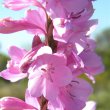
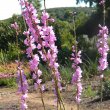
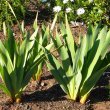
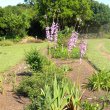
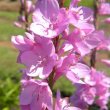


Discuss this plant
Share knowledge, ask a question or give an experience.